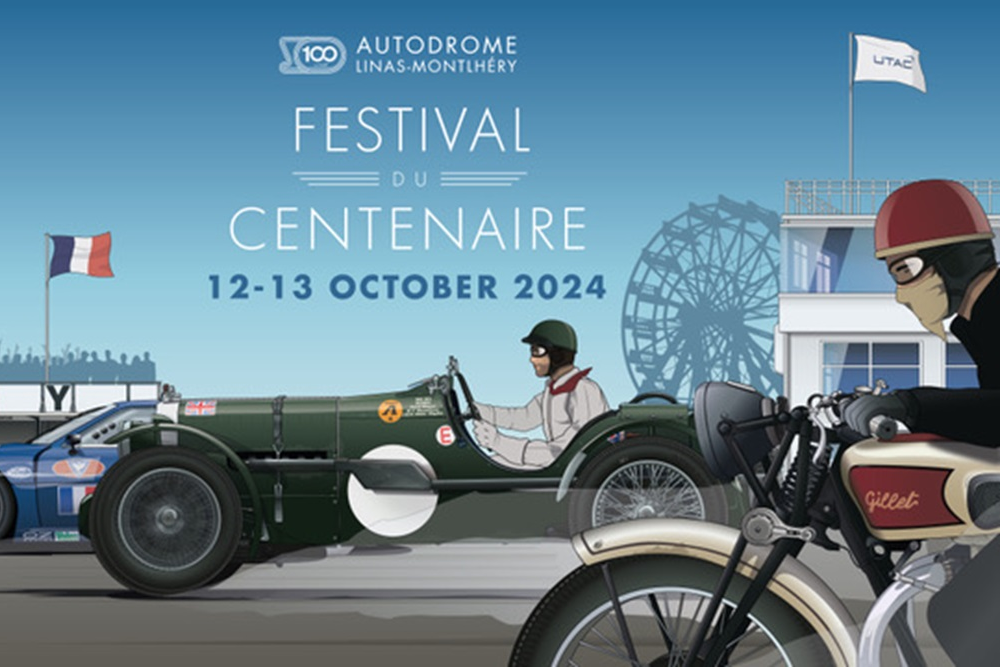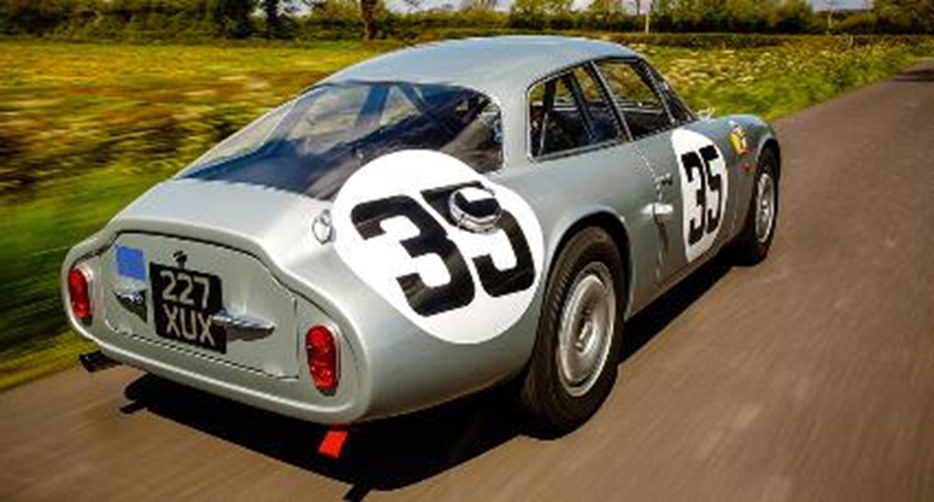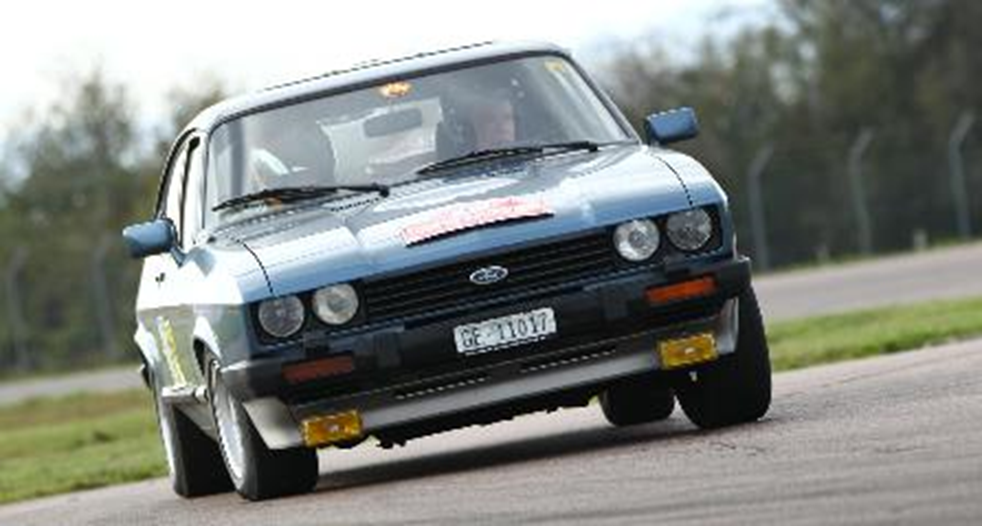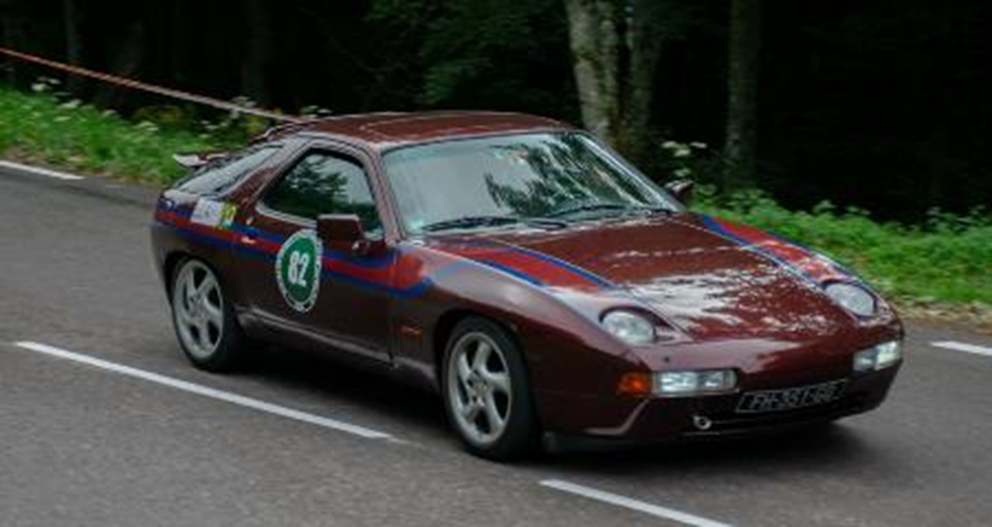Since its beginnings in 1924, the UTAC Autodrome at Linas-Montlhéry has been home to countless races, thrilling championships and unforgettable encounters between drivers and fans. From classic racing cars to modern cars and motorbikes, the Autodrome has seen technology and the art of track driving evolve over the years.

UTAC, the circuit’s owner, has decided to create a gathering this year to pay tribute to it: the Centenary Festival.
On the track, visitors will have the pleasure of admiring six grids of cars, dating from 1924 to the 2020s. Two grids of motorbikes will also be on show, reflecting the highlights of the Autodrome’s history. The iconic car clubs are also invited to take part in this great celebration.
This will also be a celebration for the whole family, who will be able to enjoy some brand new activities in the centre of the ring, like a big wheel that allow you to contemplate the show in a new dimension.
Tickets and Registration here
Pre-War cars and motorbikes in the spotlight
The UTAC Linas-Montlhéry Autodrome, famous for its legendary events from 1924 to 1939 such as the Grand Prix de l’Automobile Club de France, the 12 Hours of Paris, the Coupes de Paris and the Bol d’Or, as well as its numerous world records (86% world records), will be feature 3 grids dedicated to pre-war vehicles. These historic cars and motorbikes from the last century will enable visitors to relive this exceptional period in the Autodrome’s history.
The Talbot-Lago T150C for the pre-war grid
 For this grid, a number of exceptional models will be on show, including the Talbot-Lago T150C of 1937. Following the Great Depression and the crisis of 1929, Talbot went bankrupt. The Italian industrial engineer Anthony Lago bought the brand in 1934, and set about transforming it into an exceptional sports car, with the company’s chief engine engineer Walter Becchia. Together they designed the Talbot Baby and Talbot-Lago T120, followed by the Talbot-Lago T150, considered one of the jewels of French motoring in the 1930s and a competitor to the prestigious Bugatti Type 46 and 57 “Atalante”, and the Delahaye Type 135, 145 and 165.
For this grid, a number of exceptional models will be on show, including the Talbot-Lago T150C of 1937. Following the Great Depression and the crisis of 1929, Talbot went bankrupt. The Italian industrial engineer Anthony Lago bought the brand in 1934, and set about transforming it into an exceptional sports car, with the company’s chief engine engineer Walter Becchia. Together they designed the Talbot Baby and Talbot-Lago T120, followed by the Talbot-Lago T150, considered one of the jewels of French motoring in the 1930s and a competitor to the prestigious Bugatti Type 46 and 57 “Atalante”, and the Delahaye Type 135, 145 and 165.
A special pre-war Bugatti grid, including the Type 37
 Considered one of the pioneers in the automobiles field and luxury sports cars, Bugatti is one of the most emblematic car manufacturers. For this special Bugatti grid, we can already count on the participation of the Type 37A.
Considered one of the pioneers in the automobiles field and luxury sports cars, Bugatti is one of the most emblematic car manufacturers. For this special Bugatti grid, we can already count on the participation of the Type 37A.
If we were to sum up the Bugatti Type 37 quickly and almost caricaturally, it could be considered as a Bugatti Type 35A but with an engine halved in size, making its appearance in November 1925. The chassis, bodywork and transmission were similar to those of the 35 and 37, but the engine was a real novelty; it was a half 8-cylinder, but from the Type 28.
From 1927, Bugatti brought out a Type 35 C, which kept the 8-cylinder and added a compressor. This combination proved effective, and the Alsatian firm adapted it to its 4-cylinder engine. Power rose to 90 bhp and top speed approached 190 km/h.
These fine performances were to prove themselves in competition. The Bugatti Type 37A shone behind the Type 35.
A Gillet Herstal 350 Supersport for the pre-war motorbike grid
 Gillet Herstal, founded in 1919 and disappeared since 1959, is a Belgian motorbike and car manufacturer. Known for its speed record in the Cyclecar 500 category, with a speed of 117.647 km/h, the brand made its mark in the motor industry with its 350 Supersport model of 1932.
Gillet Herstal, founded in 1919 and disappeared since 1959, is a Belgian motorbike and car manufacturer. Known for its speed record in the Cyclecar 500 category, with a speed of 117.647 km/h, the brand made its mark in the motor industry with its 350 Supersport model of 1932.
From 1947 to today
After the war, the autodrome reopened its doors in 1947, marking the start of a long series of motor races on the circuit that continued until 1995 : AGACI Cups (Grand prix de Paris, Coupe d’Automne, Coupes de Paris), USA Cups (Union Sportive Automobile), Coupe Ile de France, Coupes du Salon, Trophée de France and 1000 km de Paris. All these races have left their mark on the history of the autodrome and the motor racing world.
The Porsche 917 K and 910 on show at the 1,000 km of Paris grid
A famous race on the Linas-Montlhéry circuit from 1956 to 1995, the 1,000 km of Paris has seen some of the greatest drivers and most beautiful cars compete.
 So, for the Centenary Festival, some of the competition cars will be present, such as the Porsche 917 K of 1969, one of the queens of the category. A mythical car for Porsche, it won the 1,000 km of Paris in 1971 with its chassis 013, with Derick Bell and Gijs Van Lennep as driver.
So, for the Centenary Festival, some of the competition cars will be present, such as the Porsche 917 K of 1969, one of the queens of the category. A mythical car for Porsche, it won the 1,000 km of Paris in 1971 with its chassis 013, with Derick Bell and Gijs Van Lennep as driver.
 Another great competitor will be the Porsche 910 of 1976, which finished 3rd overall and 1st in its class at the 1,000 km of Paris in 1967, and is also a regular at historic events such as the Tour Auto and Le Mans Classic.
Another great competitor will be the Porsche 910 of 1976, which finished 3rd overall and 1st in its class at the 1,000 km of Paris in 1967, and is also a regular at historic events such as the Tour Auto and Le Mans Classic.
The renaissance of the automobile in a Fifties and Sixties grid
During the Second World War, the car industry ground to a halt, and once the war was over it was difficult for manufacturers to get back on their feet. However, in the 1950s, manufacturers reinvented their models, which led to the growth and popularity of the car. Like the 50s, the 60s were also beneficial for the car industry. They marked a decisive turning point and were also a source of inspiration, even today.
 This special Fifties and Sixties grid pays tribute to iconic models and manufacturers, including the 1956 D.B HBR5. A car with a well-thought-out concept, Deutsch-Bonnet wanted the car to be as light as possible by fitting it with a small engine so that it could cover long distances in competition and win in the « performance index » class.
This special Fifties and Sixties grid pays tribute to iconic models and manufacturers, including the 1956 D.B HBR5. A car with a well-thought-out concept, Deutsch-Bonnet wanted the car to be as light as possible by fitting it with a small engine so that it could cover long distances in competition and win in the « performance index » class.
The initials HBR have a special meaning because they refer to the codes of the Fédération Internationale du Sport Automobile governing motor racing.
The « H » therefore corresponds to the category of sports cars with a cubic capacity of between 500 and 750 cm3. The « B » corresponds to two-seater cars, the « R » to cars that can be driven on the road and the « 5 » to the 5CV power delivered by the Panhard engine.
 Alongside it is the 1963 Alfa Romeo Giulia Zagato Coda Tronca. Emblematic of the brand in terms of both performance and design, this sports coupé owes its bodywork to the famous Zagato and its sum to its coupé rear end. The car is very light, and can reach a speed of 216 km/h.
Alongside it is the 1963 Alfa Romeo Giulia Zagato Coda Tronca. Emblematic of the brand in terms of both performance and design, this sports coupé owes its bodywork to the famous Zagato and its sum to its coupé rear end. The car is very light, and can reach a speed of 216 km/h.
A Ducati 250 Competition for the 1945-1980 motorbike grid
Ducati, founded in 1926, is a famous Italian motorbike manufacturer, renowned for its twin-cylinder engines « V », yet it didn’t start manufacturing motorbikes until the 1950s.
Its model, the Ducati 250 Competition of 1969, is one of the brand’s examples of speed, and has shone in numerous championships.
A grid of former youngsters, the Youngtimers
Dedicated to the future Collectors of 80s and 90s motoring, the grid will feature the sportiest models of the era, which are proving increasingly popular with enthusiasts who appreciate their timeless charm and potential to become icons of the past.
 A number of iconic models will be on show, including the Ford Capri 2.8 of 1982. It was part of the great era of the European Touring Car Championship (ETCC), which ran from 1966 to 1984. This long period dedicated to Touring was an opportunity for a number of manufacturers to field their most emblematic models. Alongside it was the
A number of iconic models will be on show, including the Ford Capri 2.8 of 1982. It was part of the great era of the European Touring Car Championship (ETCC), which ran from 1966 to 1984. This long period dedicated to Touring was an opportunity for a number of manufacturers to field their most emblematic models. Alongside it was the  Porsche 928 S4 of 1988, the marque’s first model to be fitted with a V8 (installed in the front), produced from 1978 to 1995 and winner of the European Car of the Year trophy in 1978.
Porsche 928 S4 of 1988, the marque’s first model to be fitted with a V8 (installed in the front), produced from 1978 to 1995 and winner of the European Car of the Year trophy in 1978.
Eighth and final grid of the festival: Supercars
 The grid will be made up exclusively of supercars designed by the world’s leading carmakers and distinguished by their aesthetics, performance and on-board technologies derived from racing. A number of models will be on show, including the Alpine A110R Le Mans (2024), representing the rebirth of the brand
The grid will be made up exclusively of supercars designed by the world’s leading carmakers and distinguished by their aesthetics, performance and on-board technologies derived from racing. A number of models will be on show, including the Alpine A110R Le Mans (2024), representing the rebirth of the brand  through an extreme version following in the footsteps of its ancestor, the GTA Le Mans, and produced in a limited edition of 100.
through an extreme version following in the footsteps of its ancestor, the GTA Le Mans, and produced in a limited edition of 100.
Also on show is the 2018 Mercedes AMG GTR, a closer-to-the-track evolution of the familiar GT car. The engineers have drawn on their racing experience to develop this exclusive version.










